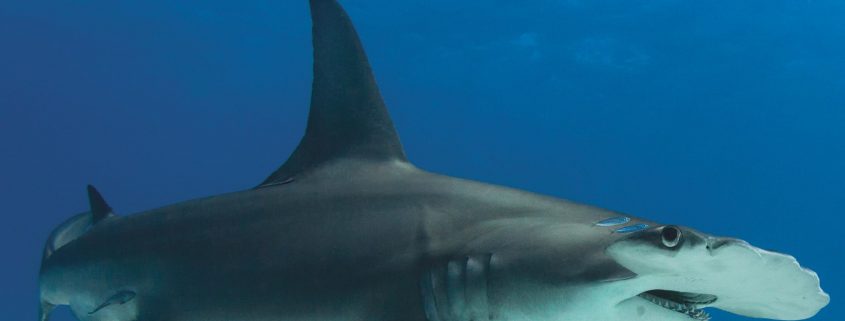14 things our lab accomplished in 2014
1) We published “Evolved for extinction: the cost and conservation implications of specialization in hammerhead sharks,” a review of hammerhead biology and conservation that was featured on the cover of BioScience! Read it here:
2) We led 65 shark research trips, including two trips to our Tiger Beach research site in the Bahamas!
3) We published “Considering the fate of electronic tags: interactions with stakeholders and user responsibility when encountering tagged aquatic animals,” which was featured on the cover of “Methods in Ecology and Evolution.” Read it here:
4) We brought over 1,200 citizen scientists out on the research vessel with us to learn about sharks, participate in our scientific research, and learn about local conservation issues. They ranged in age from 10 to 73, came from 46 states and 40 countries, and included representatives from 33 schools, community organizations and corporations.
5) We published “an assessment of the scale, practices, and conservation implications of Florida’s charterboat based recreational shark fishery,” which was featured on the cover of Fisheries. Read it here
6) We caught, measured, sampled and tagged 331 sharks of 11 species. The most common species we caught was the nurse shark (151 individuals). We also caught 6 Atlantic sharpnose, 25 blacknose, 15 blacktips, 15 bulls, 10 Caribbean reefs, 19 great hammerheads, 26 lemon sharks, 27 sandbar sharks, 1 scalloped hammerhead and 36 tiger sharks.
7) We published “Physiological stress response, reflex impairment, and survival of five sympatric shark species following experimental capture and release,” an important paper showing how the stress of being caught by fishing gear can harm or kill a shark even if it is eventually released. Read it here
8 ) We attached satellite tags to 19 sharks: 8 great hammerheads, 1 scalloped hammerhead, and 10 tiger sharks. You can track all of our satellite tagged sharks here using Google Earth, and you can adopt your own, name it, and join us when we tag it here
9) We published “Vulnerability of oceanic sharks as pelagic longline bycatch,” an analysis of how different species of sharks react to being caught as bycatch in commercial fisheries. Read it here.
10) Our students presented their research at major scientific conferences, including Sharks International, the American Elasmobranch Society meeting, and the International Marine Conservation Congress!
11) We published three papers from our morphometric analysis project! Read them here: 1, 2, and 3.
12) Our research was covered in many media outlets, including Al Jazeera America, the South Florida Sun-Sentinel, and CBS News!
13) Our interns wrote dozens of blog posts on a huge variety of topics related to ocean science and conservation.
14) We passed 4,000 fans on our Facebook page, which continues to share ocean science and conservation news! Have you “Liked” our page?
Thanks for your continued support! With your help, 2015 will be even better!







Leave a Reply
Want to join the discussion?Feel free to contribute!